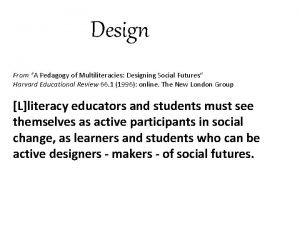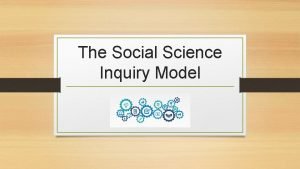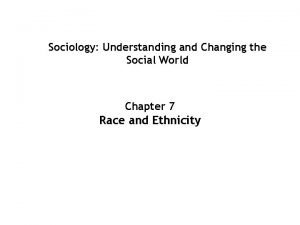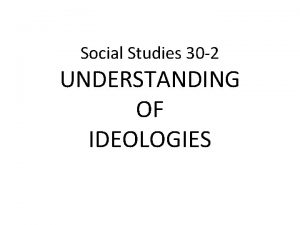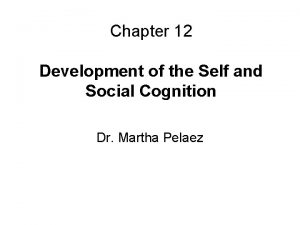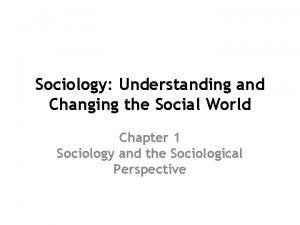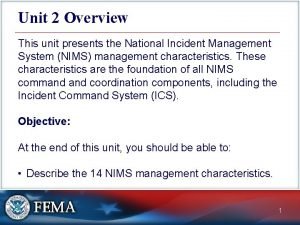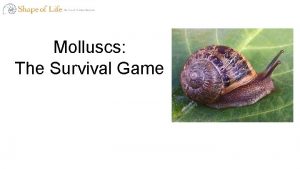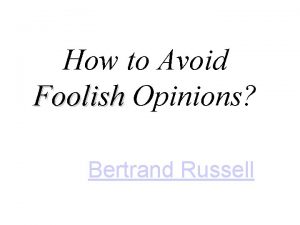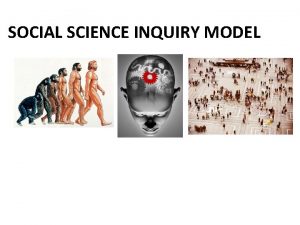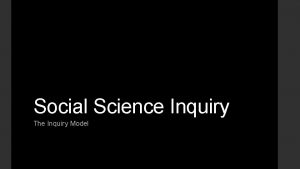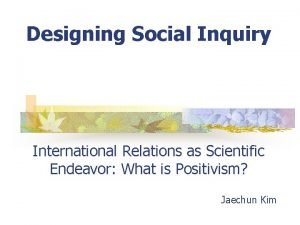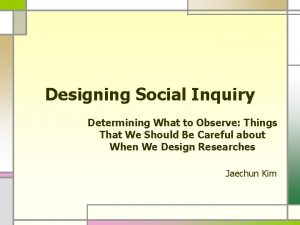Designing Social Inquiry Understanding What to Avoid Jaechun
















- Slides: 16

Designing Social Inquiry Understanding What to Avoid Jaechun Kim

n In previous class, we discussed how we should design our research… we talked about indeterminate research design (small N problem and multicollinearity), selection bias, etc. n Today, we will discuss things we need to avoid when we make inferences…when we measure variables… briefly…

n Making Observations - Two criteria for judging the soundness of measurement n Un-biasedness - validity Efficiency - reliability… n Remember dart-throwing example… ! n Increase reliability (efficiency) and reduce bias – that is the goal that you should pursue when you measure your variables… n

n Types of Measurement n Nominal measurement Observations are grouped into a set of categories n Presidential system vs. Parliamentary system or… n n Ordinal measurement Observations are grouped into categories that have ordering schemes n Examples? ? Countries with degree of industrialization n n Interval measurement – continuous variables… n n Example – annual economic growth rate or GDP, etc. Ethnicity in the US - nominal or ordinal measurement? ?

n p. 153 n Use the measure that is appropriate to your theoretical purposes… !

n Use measurement made by other researchers for entirely different purposes in order not to craft your variables to justify your hypotheses… e. g. , Democratic Peace scholarship uses Polity data set n Polity IV Project http: //www. systemicpeace. org/polity 4. htm n Grouping error. . What is it? P. 153 n n n Effect of Age on Hours of Sleep Needed… Young-aged group, middle-aged, old-aged groups… Why is it problematic? ?

Measurement n Don’t worry too about the parts on nonsystematic and systematic measurement error. Just browse the parts on these subjects in KKV…!!! n n Error… p. 155 on… Systematic measurement error n n What is it? Consequence? It will bias descriptive inference (But systematic measurement error that affects all units by the same constant amount causes no bias in causal inference…)

n Nonsystematic Error Measurement n What is it? n Nonsystematic measurement error in the DV Consequence? n Does not bias the usual estimate of the causal effect, but it does make the estimate less efficient

p. 161 figure here!

p. 165 figure here!

n n n An example of omitted variables problem pp. 177 -178 Impact of summit meetings Cooperation between the USSR and US n Any antecedent variables? n Econ interests or military interests? ? n Trust? n Convergence of geopolitical ambitions? n Any other domestic political reasons?

n Problem of Endogeneity n This problem occurs when the values of EVs or IVs take on are a consequence, rather than a cause, of DV… n Examples n P. 186 Constituency services Votes n No real positive evidence supporting this. Why?

n Max Weber’s The Protestant Ethic and the Spirit of Capitalism n What is Weber’s causal hypothesis? n What’s wrong with this? n P. 191 Causal Impact of Ideas… n Ideas n can be consequences of policy… P. 192 Halpern (1993) n What is her causal hypothesis?

n Stalinist planning doctrine (idea) economic policies after WWII n Alternative n hypothesis? Soviet military might and influence n China and Yugoslovia? ?

n pp. 193 -195, the last paragraph n What is the research question of the authors (Verba, Schlozman, and Brady)? n What is their causal hypothesis? n Going to church Political Participation n Why can it be problematic? n How did the authors resolve this ‘endogeneity’ problem?

 Blogspot
Blogspot Social inquiry model
Social inquiry model Social inquiry definition
Social inquiry definition Social thinking and social influence in psychology
Social thinking and social influence in psychology Social thinking social influence social relations
Social thinking social influence social relations Sociology understanding and changing the social world
Sociology understanding and changing the social world Understanding of ideologies social 30-2
Understanding of ideologies social 30-2 Development of self and social understanding
Development of self and social understanding Debunking motif definition
Debunking motif definition Depending on the incident size and complexity various types
Depending on the incident size and complexity various types How can using refusal skills help you to avoid stress
How can using refusal skills help you to avoid stress Characteristics of a relational database
Characteristics of a relational database The target person complies in order to obtain
The target person complies in order to obtain What are the basic principles of platter presentation
What are the basic principles of platter presentation How does the cockle avoid the moon snail
How does the cockle avoid the moon snail Proper netiquette to avoid copyright
Proper netiquette to avoid copyright How to avoid foolish opinions
How to avoid foolish opinions
